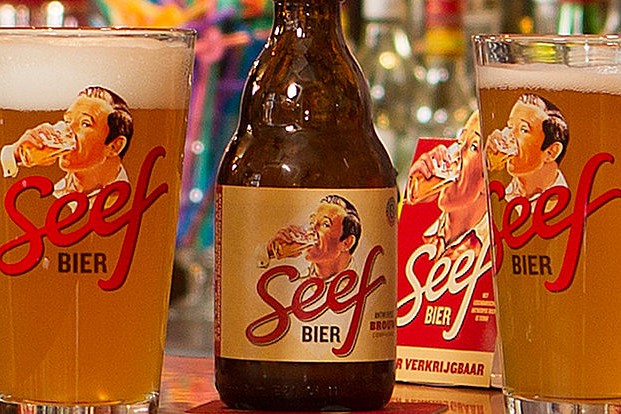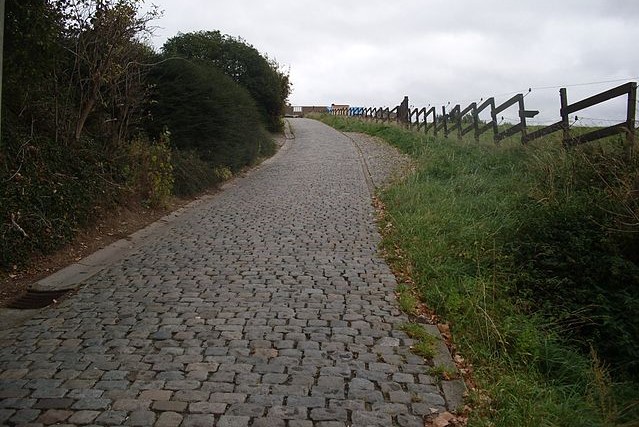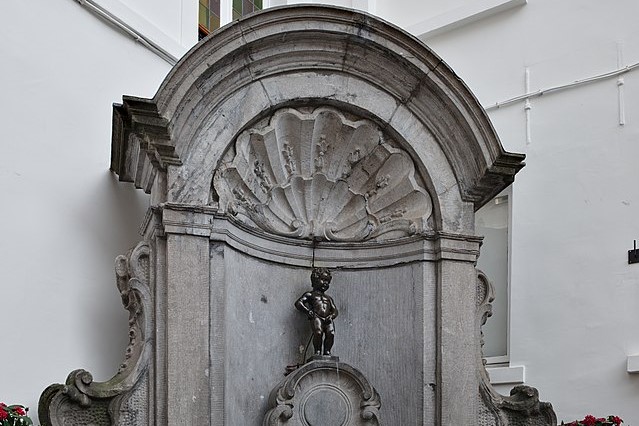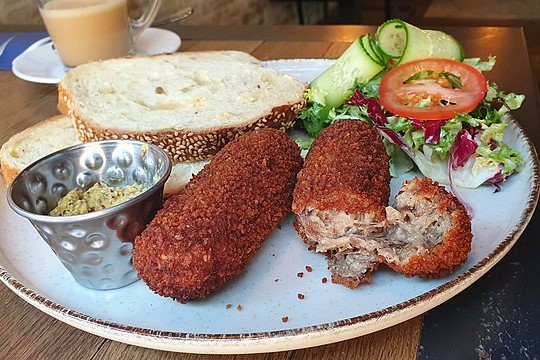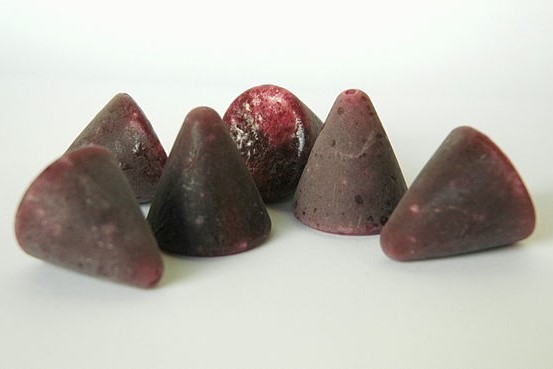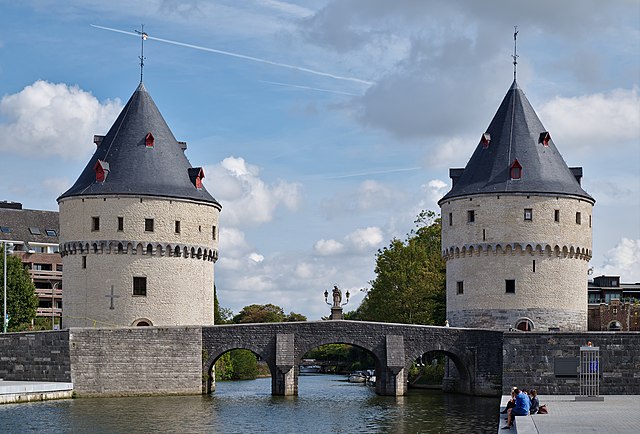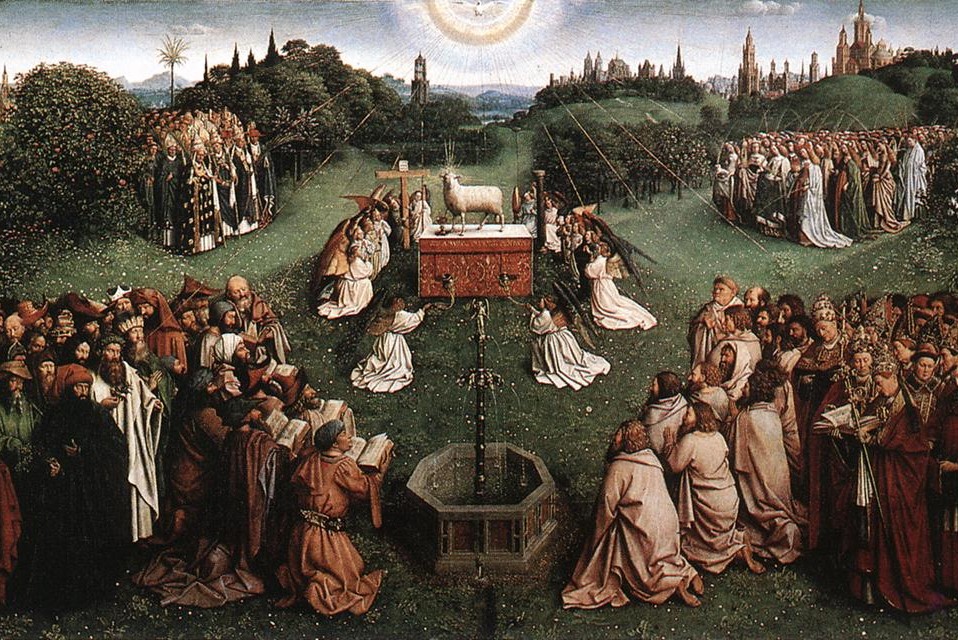Visiting the area
Travel with the public transport
The Belgian train network is very extensive. It takes you to almost every little village across the country. Have a look at: www.belgiantrain.be for routes and tickets. The conference centre is a 10 minute walk from the train station. The table below gives a brief overview of the most interesting places to visit in the vicinity of Bruges.
City | Travel time by train from Bruges (min) |
Ostend | 15 |
Ghent | 30 |
Kortrijk | 50 |
Brussels | 60 |
Oudenaarde | 60 |
Antwerp | 90 |
Ypres (via Kortrijk) | 90 |
What to do in ...
Ostend
Ostend is the biggest city located at the short Belgian coastline. During the “Belle Époque”, the end of the 19th century, the city was flourishing and attracted aristocrats from around the world. Ostend became known as “the queen of the Belgian sea-side resorts”, partly due to investments from the Belgian royalty at the time. Most of the landmarks dating from this era, like the Thermae Palace, the Royal Galleries, the Wellington Hippodrome, the Casino … can still be visited.
A famous painter, named James Ensor, was born and lived his whole life in Ostend. His home and atelier are now a museum about the life of this artist: The James Ensor House. Some Ensor works are on exhibition in Ostend at Mu.ZEE, but the biggest collection can be found in Antwerp at KMSKA.
The local dish in Ostend are shrimp croquettes. This is a must when visiting the area.
More info: Visit Ostend
Local beer: Keyte Tripel
Bruges
The city of Bruges is the current capital of the province of West Flanders. During the middle ages, the city was an economic hotspot and attracted merchants from all over Europe. It is one of the well-known Hanseatic cities. The wealth translated into beautiful buildings and architecture, resulting into the designation of the entire city center as UNESCO World Heritage. Buildings like the Belfry, City hall, the Church of Our Lady, Béguinage, … all contribute to the unique atmosphere that the city exudes. If the weather permits, a boat trip through the canals is recommended.
Every year on ascension day, the Procession of the Holy Blood is held. The procession dates back to the 13th century and is accompanied by great festivities. During the year, the relic can be seen in the Basilica of the Holy blood.
More info: Visit Bruges
Local beer: Fort Lapin Tripel 8
Ghent
Ghent is a big city with a very rich history. It is the capital of the Province of East Flanders. The center is littered with monuments such as the Belfry, Saint Nicholas’ Church, Saint Bavo’s Cathedral, The Castle of the Counts, …
In Saint Bavo’s Cathedral, the “Ghent Altarpiece – The Adoration of the Mystic Lamb” can be admired. This panel painting is one of the masterpieces from the “Flemish Primitives” Jan and Hubert Van Eyck. 11 of the 12 original panels are on exhibition. The missing panel “The Just Judges” was stolen in 1934. It remains missing to this day. Every now and then, new clues are being investigated, followed by a big media circus. A replica of “The Just Judges” is used in the exhibition.
Apart from architecture and culture, Ghent is also a culinary hotspot. When visiting, be sure to buy some famous “Cuberdons” or try the local “Waterzooi” dish.
More info: Visit Ghent
Local beer: Gruut Bruin
Oudenaarde
Oudenaarde is located at the river Scheldt, at the foot of the Flemish Ardennes. The Flemish Ardennes are not to be confused with the larger Ardennes in the south of Belgium, Luxembourg, Germany and France. They are a remnant of iron-rich shoals from a sea during the Paleogene and Neogene geologic periods, resulting in an area with steep hills.
The area is a paradise for cyclists, as many of the roads and climbs are cobbled. Oudenaarde houses since 2012 the finish of the Tour of Flanders Cycling Monument. Most of the famous climbs like the Oude Kwaremont, Paterberg, Koppenberg, Taaienberg, … are in the vicinity of the city. There are a lot of (race)bike rentals locations available for enthusiasts.
The central market square houses the city hall with an integrated belfry which is an UNESCO World Heritage Site. You will also find the MOU (Museum Oudenaarde) there, where a fine collection of medieval tapestries and trinkets are on display.
More info: Visit Oudenaarde
Local beer: Ename Blond
Ypres
If you say Ypres (or Ieper in Dutch), you say World War I. The city was never captured by the attackers during the four years of war. However, the city was completely destroyed by constant attacks and artillery barrages. Ypres became a symbol of the first World War and the reality of industrial warfare.
The historical Cloth Hall and Cathedral were rebuilt after the war. The “In Flanders Fields Museum” resides in the Cloth Hall and is highly recommended to visit.
Another remembrance site is the Menin Gate, a large monument with the names (> 50.000) of the Commonwealth nations soldiers who were killed in the Ypres Salient during the First World War. Every day at 20:00, the bugle call “Last Post” is held.
More info: Visit Ypres
Local beer: OBUZ Tripel
Kortrijk
Kortrijk or Courtrai in French is an important city in the history of Flanders. On the 11th of July 1302, the Flemish people defeated the French army at “The Battle of the Golden Spurs”, near Kortrijk. This heroic victory is commemorated each year on the 11th of July as the Day of the Flemish Community.
During the industrial age, Kortrijk was the center of the Flax industry. The river Lys, where the city is built around, was commonly referred to as the “Golden river”, due to retting of flax.
The most iconic buildings in Kortrijk are “The Broel Towers”. Two medieval gothic style towers who were part of the city walls during the middle ages. On “The Grote Markt” (the big market) you will find the medieval city hall and the Belfry. Next to the Grote Markt lies “The Béguinage”. A UNESCO World Heritage Site filled with small houses around a courtyard.
More info: Visit Kortrijk
Local beer: Tripel LeFort
Antwerp
Near the end of the Belgian part of the river Scheldt is Antwerp located. The city houses the second biggest port in Europe. Here, Sinterklaas (Saint Nicholas) arrives with his steamboat from Spain to give presents on the 6th of December to all the good children.
When visiting Antwerp with the train, you will most likely arrive in the central station. This is an imposing building dating from the early 20th century. Next to the central station is the Diamond Quarter. More than 80% of the world’s rough diamonds are traded here.
Art lovers will find their liking in the city. The MAS houses eight different floors. Some with permanent exhibitions, others with temporary ones. The Royal Museum of Fine Arts has an extensive collection of paintings ranging from the 15th until the 20th century.
More info: Visit Antwerp
Local beer: Seef Bier
Brussels
Brussels is the capital of Belgium. The whole capital region is bilingual in Dutch and French, so we say “Brussel” in Dutch and “Bruxelles” in French. The Belgian King Phillip and Queen Mathilde live here in the Palace of Laeken.
The whole “Grand-Place” is a UNESCO World Heritage Site and is certainly worth a visit. Close by, you will find “Manneken Pis”. A bronze statue of a little boy urinating, made in 1619. When visiting the area, it is mandatory to taste a Brussels waffle – which is not to be confused with a Liege waffle!
One of the most famous Belgian monuments can be seen here: The Atomium. It was built for the World’s Fair in 1958 and resembles an iron crystal.
Brussels is often referred to as the “Capital of Europe”. A lot of European institutions have their headquarters here. The European Parliament gathers here and the Hemicycle can even be visited.
More info: Visit Brussels
Local beer: Gueze Classic
